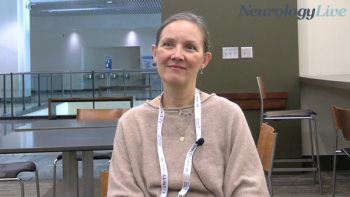
Charcot-Marie-Tooth Gene Therapy Yields Improvements in Disability and Muscle Loss
The phase 1 trial is the first in-human trial to assess a gene therapy for CMT.
VM202 (Engensis), a
The trial, which is the world’s first assessing a gene therapy for the neuropathy, was conducted by Choi Byung-Ok, MD, professor, neurology, Sungkyunkwan University School of Medicine, and director, Korean Organization for Rare Diseases, at the Samsung Medical Center in Seoul, Korea.
The study enrolled 12 participants with CMT, 10 of which had moderate CMT and 2 of which had mild CMT. Participants had CMT neuropathy scores (CMTNS-v2) of over 2 to 20.
The trial’s primary outcome measures assessed safety. Exploratory efficacy measurements such as functional disability scale (FDS), overall neuropathy limitations scale (ONLS-Leg), and CMTNS-v2 to assess fatigue and neuropathy as well as magnetic resonance imaging (MRI) to assess fraction of fat and therefore muscle loss from neuropathy.
WATCH NOW:
VM202 appears to be safe and well-tolerated in line with previous studies assessing the gene therapy in other indications. Two treatment-related adverse events (AEs), ankle edema and injection site pruritus, did occur, although participants recovered and doses were maintained.
Investigators observed improvements in FDA and ONLS-leg. Seven participants improved on score 1 in FDS and 5 showed no change. Four participants improved on score 1 in ONLS-leg and 8 showed no change. There was an average change of 0.33 over 9 months.
Improvements were also observed on CMTNS-v2. There was an average 2.17 score reduction during the 9-month follow-up period, which is a 14% change from baseline (P <.01). Particularly, sensory symptoms, pinprick sensibility, and vibration scores significantly improved from baseline.
Investigators estimated muscle loss by fat fraction on MRI. There was an average 0.2% increase in fat fraction in gastrocnemius and 1.9% increase in fat fraction in tibialis anterior muscles. These values were similar to historical data. Patients with over a 10% fat fraction at baseline had a much lower magnitude of fat increase (range –0.8% to 1.2%) depending on muscle areas. Patients with these characteristics had a 3% increase in fat per year according to other studies.
These data suggest that VM202 may slow down or improve muscle degeneration, which is consistent with preclinical findings. Helixmith is planning a larger phase 2 study to verify these observations.
VM202 is a non-viral, plasmid gene therapy product designed to express recombinant hepatocyte growth factor (HGF) protein in nerve and Schwann cells. This mechanism should promote nerve system regeneration and microvascular blood vessel formation. The gene therapy should offer advantages over recombinant HGF protein therapies made less effective due to HGF’s short half-life.
VM202 is being assessed in a number of indications, including painful diabetic peripheral neuropathy, amyotrophic lateral sclerosis, and critical limb ischemia. Over 500 patients across 10 clinical trials in 6 different indications have been treated with the gene therapy so far.
Helixmith previously announced positive data in
"Diabetic foot ulcers are one of the most serious complications associated with diabetes, contributing to high levels of morbidity, mortality, and health-care costs in this population, and there have been limited treatment options to date," said principal investigator David G. Armstrong, DPM, MD, PhD, professor, surgery, and co-director, USC Limb Preservation Program, Keck School of Medicine, University of Southern California, in a statement.2 "Given the safety profile and potential healing effects we identified in this study, continuing a larger DFU study is warranted with iterations of the current protocol and expansion of the number of sites."
REFERENCES
1. Helixmith Co. Ltd announces positive topline data from world's first gene therapy phase 1 study for CMT. News release. Helixmith. November 9, 2021. https://www.prnewswire.com/news-releases/helixmith-co-ltd-announces-positive-topline-data-from-worlds-first-gene-therapy-phase-1-study-for-cmt-301419191.html
2. Helixmith announces phase 3 study results of novel gene therapy treatment for diabetic foot ulcers at 2021 Annual Meeting of Diabetic Foot Ulcer Conference (DFCon). News release. Helixmith. October 22, 2021. https://www.prnewswire.com/news-releases/helixmith-announces-phase-3-study-results-of-novel-gene-therapy-treatment-for-diabetic-foot-ulcers-at-2021-annual-meeting-of-diabetic-foot-ulcer-conference-dfcon-301405923.html
Newsletter
Stay at the forefront of cutting-edge science with CGT—your direct line to expert insights, breakthrough data, and real-time coverage of the latest advancements in cell and gene therapy.











































